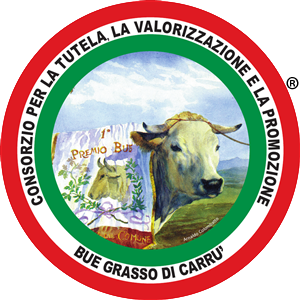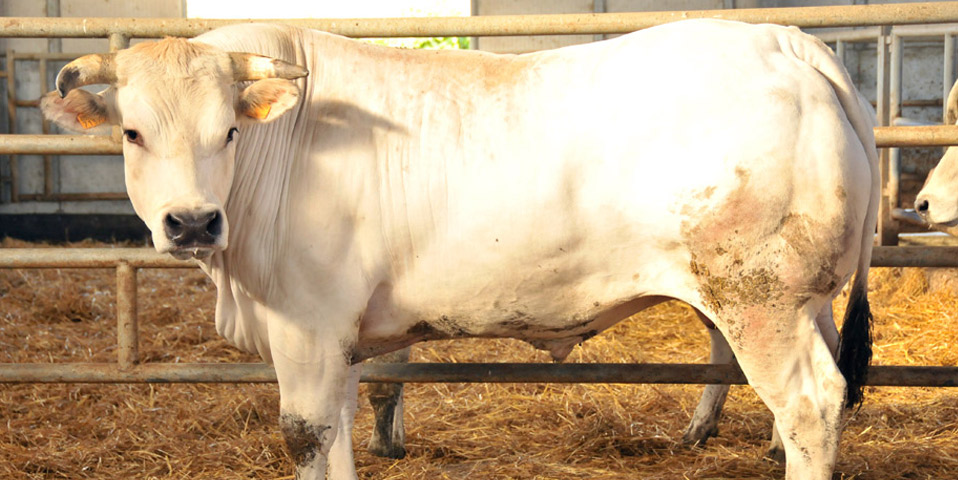
THE SUPPLY CHAIN: THE FAT OX
The cattle must be male and of Piedmontese breed, they must be marked by the official identification marks (ear tags) required by the current law and be registered in the genealogical book of the Piedmontese breed. Cattle without horns are not admitted to this Regulation. Origins of the Piedmontese breed, area of production, morphological characteristics, production characteristics, qualities and procedures for the registration in the genealogical book are described in attachment nr. 2, which is integral part of this Regulation. The cattle must undergo castration by using the classic "Burdizzo" forceps or by surgical castration with removal of the testicles and the epididymis, in the production area established by the Consortium. The application of the selected procedure must be stated by a veterinary certification and carried out in the first months of life of the animal, normally within the age of seven, maximum eight months. Every year the ordinary associate has the obligation to castrate at least one bovine head. This is to ensure the support and continuity of the Consortium's activities. The ordinary associate has the obligation to inform the Consortium of the sale of the bovine head object of the present Consortium. In the initial phase the qualification of Fat Ox from Carrù or Steer from Carrù is assigned every year to each associate for a maximum of five animals, that can be oxen or steers. From the cattle castrated within the seventh / eighth month of age and present in the official registry a blood sample will be taken directly and exclusively by a veterinarian appointed by the Consortium itself; this blood sample will be used for DNA typing and for the creation of the "Blood Bank", based at the ASL Veterinary Service - headquarters in Mondovì - and aimed at creating, at the end of the production cycle, the official identification and the consequent certification of the "Fat Ox from Carrù" and of the "Steer from Carrù". At the time of the blood sampling a properly sealed blood sample must also be delivered to the owner of the bovine head for the prevention of any possible future disputes. In the cattle the incisor teeth exist only in the jaw, while they are missing in the upper jaw, they are eight in number and make four pairs of teeth that take the name, starting from the central one, of “piccozzi” incisors, first medians, second medians and cantons. The period of fall of the milk incisors and of the eruption of the permanent ones requires that between 42 and 48 months of age the fall occurs and the cantons are replaced, so, in compliance with the above and with the provisions of the official classification of the cattle for slaughter, a male bovine castrated after the 48th month of age, or in other words from the eruption of the 7th incisor tooth onwards is considered as ox, whereas the male bovine castrated from 2 to 3 years of age or with 1 to 6 adult incisive teeth is considered as steer. OTHER LIKS OF THE SUPPLY CHAIN
Other links
News
-
Inno al Bue Grasso di Carrù
25/05/2030 -
Video Storia del Bue Grasso di Carrù e della razza Piemontese
25/05/2030 -
VIDEO FESTA DELLA CARNE 2019
01/12/2030 -
Video introduzione Convegno scientifico sulla carne rossa Piemontese
30/12/2050 -
2-Convegno scientifico relazione Dott. Enrico Veronesi
30/12/2050 -
3-Convegno scientifico relazione Dott.sa Gigliola Braga
30/12/2050 -
4-Convegno scientifico relazione Dott.sa Susanna Bramante
30/12/2050 -
5-Convegno scientifico relazione Dott. Lorenzo Bonoldi
30/12/2050 -
6-Convegno scientifico brunch finale
30/12/2050
